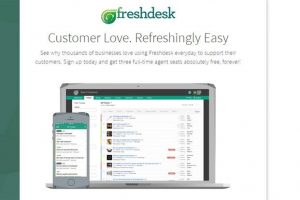
This article is written with field sales teams in mind. However, if you run an inside sales team exclusively, don’t despair, you may still find a nugget or two of helpful information as well.
Containing costs is important in every business. But for businesses where the costs of creating new customers are measured by lenders to determine the health of that business, they are especially important to manage.
In the electronic security industry, as well as SaaS, telecom and other recurring revenue businesses, customer creation costs are a key component which determines the company’s ability to borrow for expansion.
Conference Panel Insights
While attending the recent Barnes Buchanan annual conference, which focuses on the various market and financial elements impacting the security industry, I listened to the perennial lender panel discussing the metrics associated with the industry. The session, which featured a group of senior and sub-debt lenders, discussed recurring monthly revenue, customer attrition rates and the cost to create new customers. I also had the privilege of hosting a breakfast where we discussed the state of sales in the security industry. My topics were much the same as the lender panel but from a different perspective.
Hearing these many business leaders discuss containing their customer creation costs, it seemed to be the squishiest of the measurements for companies that have field sales teams. However, I shared a few ideas in my presentation that addressed the concern and I will share them here.
Consider Utilizing an Inside Sales Team – Pat yourself on the back if you are already implementing this, but be sure you are doing it as efficiently and as effectively as possible. Here are a couple of compelling statistics that support this strategy:
Research shows that 35% to 50% of sales go to the vendor that responds first. [Source: com]
An outside sales call costs $ 308, an inside sales call costs $ 50 [Source: PointClear]
Unfortunately, I have often seen, particularly in the security industry, that customer service personnel are slapped onto the phone untrained and then called inside salespersons. They are not one and the same. Inside salespeople need to be excellent at the following:
- Building rapport quickly
- Asking compelling questions to uncover underlying reasons why they are potentially interested in your services
- Fully qualifying (or disqualifying as the case may be) and potentially even closing the sale from an emotional standpoint before a field sales rep is even engaged
Implement a Repeatable Predictive Sales Process – Whether an inside seller or field seller, following a repeatable predictive sales process is one of the easiest tools to implement and requires the least amount of true sales skill to master.
Only 31% of sellers are proficient at following a repeatable sales process however 75% of the Top 10% of sellers are strong in this competency.
87% of the Top 10% are strong in qualifying while only 25% of the general selling population are proficient at qualifying. [Source: Objective Management Group]
Implement a predictive repeatable sales process with a strong emphasis on DIS-qualifying, rather than letting salespeople shoot from the hip. This will help stop your salespeople from wasting time on fruitless proposal generating and spend more time with the right prospects. The result will be increased efficiency and more business, along with contained costs to create customers.
Focus on the Right Targets –
Of the Top 10% of sellers across more than 200 surveyed industries, 95% are effective at selling value compared to only 29% of all salespeople in the security and recurring revenue businesses. [Source: Objective Management Group].
So, if the security and other recurring revenue business salespeople aren’t selling value what are they selling? Price is the answer, which means they are likely not resonating with the right prospects and not maximizing profit for the business.
In this crowded landscape, with new entrants likely encroaching on your market continuously, it is more critical than ever that you know what your differentiated value is to your ideal clients. And your salespeople need to know it too. If you aren’t practicing what it is and focusing on it, your salespeople are making it up and it isn’t working.
Of the numerous sales teams we have analyzed in the security industry, none of them has had a clear, succinct, spot-on value proposition that is utilized across the whole team.
Trust me, I know. We video record their value propositions and, by-and-large, they have no idea what their value proposition is, how it might differ from a competitor and why the customer would care.
If your sellers think that every company or consumer out there is a right fit for your company, you are wasting money on field sales. It is like finding a needle in a haystack.
And if you are paying your salespeople a small base, a small draw or nothing at all unless they sell something, you are kidding yourself that it isn’t costing you anything to allow them to flounder around and work themselves into the grave. Not only will you have increased turnover, which is extremely costly, but you will have the largest of all costs in a recurring revenue business: Opportunity Cost.
Opportunity cost is the biggest killer of this type of business, especially if customers in your market sign multi-year contracts.
Don’t Overlook Hiring
In addition to these strategies, you must hire right. Be precise on who will work (and who won’t work) in your particular market and role. Remember, inside sales is not customer service, and field sales is different than inside sales.
Next, go hire them and onboard them quickly, completely and efficiently, so they are equipped to sell to your well-defined market as quickly as possible.
If you need a little help in the onboarding arena, we are happy to build a comprehensive program for you, or you can get a jump start on it yourself by accessing The First 90 Days, which is an outline of what you need in your onboarding program.
Business & Finance Articles on Business 2 Community
(26)
Report Post






